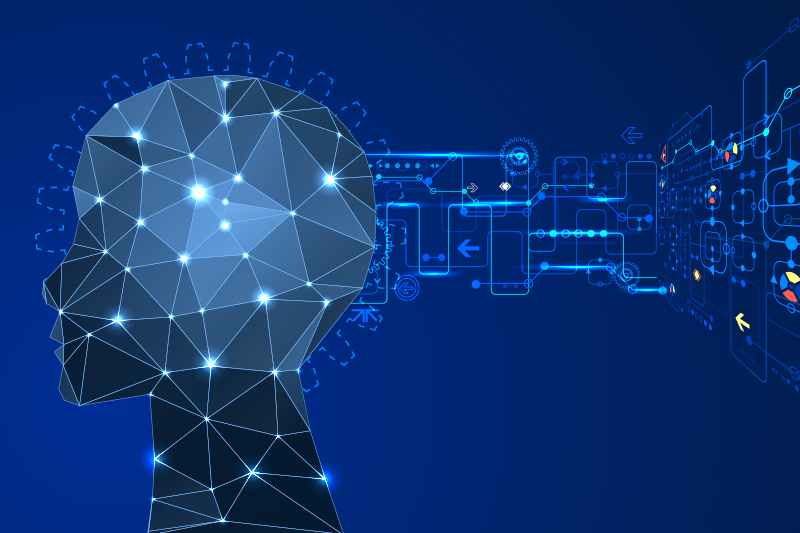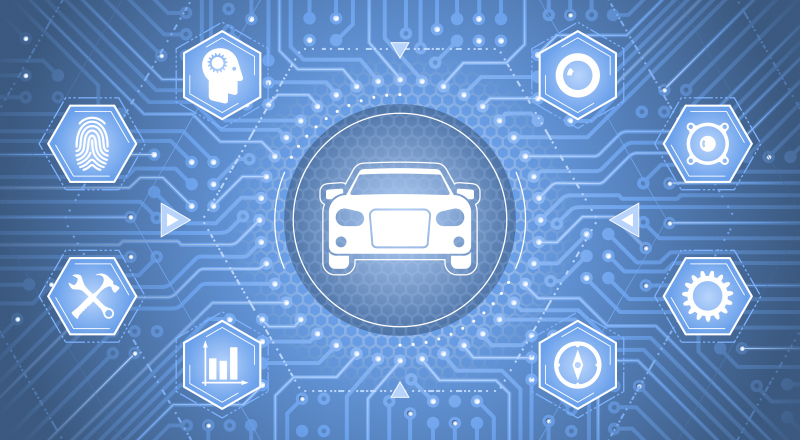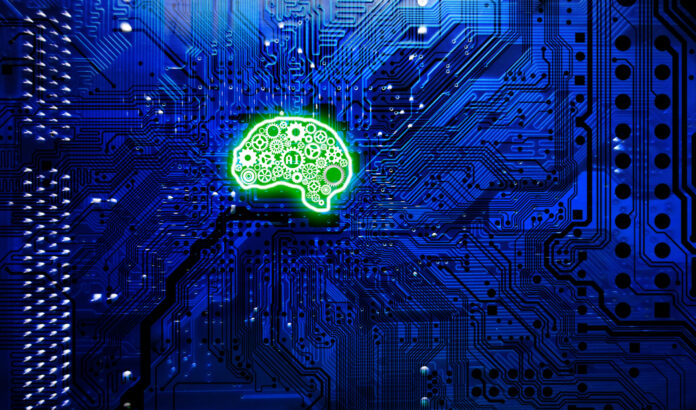Last year, we listed artificial intelligence (AI) as one of today’s most-hyped emerging technologies, with good reason: AI is driving sweeping changes in virtually every industry, from agriculture to healthcare to manufacturing and beyond.
The technology is undoubtedly growing fast, and this is reflected in a concurrent increase in patent activity. According to the World Intellectual Property Organization (WIPO), more than half of all identified AI patents were published in the last five years.
The WIPO report, Technology Trends 2019: Artificial Intelligence, offers a comprehensive overview of current trends in the AI patent landscape. In this post, we’ll look at some key statistics from the report to identify the core areas where businesses are innovating — and where AI technology is heading.

WHAT IS ARTIFICIAL INTELLIGENCE?
The definition of AI has evolved over the years. But today, it’s generally understood to refer to computer systems that can perform tasks typically performed by humans. These tasks may include interpreting a physical environment or data, or using reason or logic to solve problems.
ARTIFICIAL INTELLIGENCE: OVERALL PATENTING TRENDS
In recent years, AI patent activity has exponentially increased. As mentioned earlier, more than half of the inventions identified in the WIPO report had been published in the last five years (i.e., since 2013).
Also, the growth rate of all patent activity in general was 10% between 2013 to 2016. By comparison, the growth rate of AI-related patent activity across different technology areas is much higher — depending on the field, it can be as high as 55% (for robotics and control methods).
TECHNOLOGY AREA: AI TECHNIQUES
According to the WIPO report, machine learning (e.g., deep learning and neural networks) dominates the patent field for AI techniques, both in terms of absolute numbers as well as year-on-year growth rate between 2013 to 2016.
The plurality (40%) of all identified patents for AI techniques relate to machine learning.
Machine learning also tops the list in terms of year-on-year growth rate in patent filings for AI techniques:
- Machine learning: 28%
- Logic programming: 19%
- Fuzzy logic: 16%
TECHNOLOGY AREA: AI FUNCTIONAL APPLICATIONS
According to the WIPO report, computer vision (which includes image recognition) dominates the field of AI functional applications in terms of total patents filed: It comprises 49% of all identified patents.
However, in terms of year-on-year growth rate in patent filings, the frontrunners are quite different:
- Robotics: 55%
- Control methods: 55%
- Planning/scheduling: 37%
- Computer vision: 24%
The fact that these numbers total over 100% reveals the interdisciplinary nature of many AI inventions. Most AI patents are not restricted to just one field: Nearly 70% of AI-related inventions mention multiple AI techniques or functional applications working together.
COMMERCIAL APPLICATIONS OF AI TECHNOLOGY
AI technology also holds plenty of commercial potential across diverse industries, as the following data from the WIPO report indicates.
AI PATENTS: TOP INDUSTRIES OVERALL
Here are the top industries currently putting AI technology to work:
- Telecommunications: 15%
- Transportation: 15%
- Life & medical sciences: 12%
- Personal devices, computing and human–computer interaction: 11%
AI PATENTS: TOP INDUSTRIES IN TERMS OF YEAR-ON-YEAR GROWTH RATE
Based on data from 2013 to 2016, the industries where patent filings are seeing the most annual growth are:
- Smart cities: 47%
- Transportation: 33%
- Agriculture: 32%
- Computing in government: 30%
- Banking & finance: 28%

It’s worth noting that transportation is featured near or at the top of on both lists. This, together with the type of industries featured on the second list (the change in growth rates for patent filing), speaks to the broad interest in finding practical applications for AI technology that can significantly impact the way we go about our daily lives.
In an earlier blog post, we discussed how innovative startups like Uber have leveraged emerging technologies in their patent strategy to become industry leaders.
TOP PATENT ASSIGNEES OF AI TECHNOLOGY
The top patent assignees for AI technology tend to be generalists, with diverse portfolios spanning various techniques and applications. As the WIPO data shows, the top five leaders by portfolio size are:
- IBM: 8,290 patents
- Microsoft: 5,930 patents
- Toshiba: 5,223 patents
- Samsung: 5,102 patents
- NEC: 4,406 patents
But when we look more closely within each specific field of AI, the top patent assignees tend to be deep specialists in that particular field. Indeed, the WIPO report tells us that the top patent assignees by field are:
- Deep learning: Baidu
- Transportation: Toyota, Bosch
- Life & medical sciences: Siemens, Philips, Samsung
- Networks & social networks: Facebook, Tencent
PATENT FILINGS BY GEOGRAPHY
As of 2014, the top three patent offices for AI patent filings are, in order:
- China
- United States
- Japan
HOW FREQUENTLY DO BUSINESSES PURSUE PATENT PROTECTION IN MULTIPLE JURISDICTIONS?
At present, international filing is not highly prevalent for AI technology. That said, a greater number of companies are beginning to explore their options to protect their inventions in multiple jurisdictions.
The WIPO report offers us data into the number of jurisdictions AI-related patent applications have been filed in historically:
- One office only: 67%
- More than one office: 33%
- Five or more jurisdictions: 9%
- More than 10 offices: 0.6%
The data does contain one quirk: Filings that originate in China are the least likely to be filed in multiple jurisdictions — just 4% are — suggesting that the priority there is to secure the domestic market. (By contrast, 32% of applications originating in the United States will be subsequently filed elsewhere.)
THE ROLE OF ACQUISITIONS IN BUILDING A PATENT PORTFOLIO
Whereas smaller companies typically grow their IP organically through internal R&D, larger tech companies often use acquisitions to help cement their market position. This trend is also seen in the AI sector.
As an overview, 434 companies in the AI sector have been acquired since 1998, and more than half (53%) of those acquisitions have taken place since 2016.
The top three companies in acquisitions are:
- Alphabet (Google): 18 acquisitions
- Apple: 11 acquisitions
- Microsoft: 9 acquisitions
The WIPO report indicates that the majority of acquired companies are startups with small or non-existent patent portfolios. This suggests that the acquisitions are often for non-patent assets such as talent, knowledge, or other intellectual property.
ANALYZING THE NUMBERS: HOW DOES THIS AFFECT YOUR TECH STARTUP?
As demonstrated by the high patenting growth rate across various fields, AI technology is applicable to a diverse range of industries — setting the stage for AI to revolutionize the way we go about our daily lives.
As a result, AI is rapidly proliferating new markets, with the majority of patent applications covering commercial applications of the technology.
But there are some unique challenges with patenting AI-related inventions, and so tech companies have to be thoughtful about whether patent protection is the right move for their specific situation.
In the wake of Supreme Court decisions such as Alice, questions about subject-matter eligibility (Section 101) are likely to remain relevant, especially if an issued patent gets challenged in court. To reduce exposure to patent eligibility issues, patent applications should ideally describe the concrete outcomes that AI produces in specific types of systems.
In addition, there’s a risk that more and more AI inventions will be considered obvious (Section 103). Given the seemingly ubiquitous application of AI for solving a broad range of problems, the level of innovation required for patentability may increase as time goes on.
For example, taking a known problem and simply “using artificial intelligence” to find a solution is probably not a patentable invention in most cases, without more technical detail.
In other words, you’ll likely need lots of innovative implementation details to obtain patent protection. For example, you might need to specify how you’re adapting the problem, or modifying the AI algorithm to solve the problem, in a way that isn’t obvious to a person of ordinary skill.
OVERCOMING POTENTIAL SPEED BUMPS DURING PATENT PROSECUTION FOR AI TECHNOLOGY
AI technology holds so much potential, but it’s a complex technology that can present unique challenges for the patent process.
That’s why we recommend partnering with an experienced professional to help file your patent applications.
At Henry Patent Law Firm, our team has extensive experience assisting innovators with AI-related inventions to obtain strong, enforceable patent protection. Contact us now to find out how we can help.

Michael K. Henry, Ph.D.
Michael K. Henry, Ph.D., is a principal and the firm’s founding member. He specializes in creating comprehensive, growth-oriented IP strategies for early-stage tech companies.

